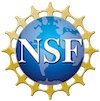Mission
To understand and tell the stories of HBCUs through convergence research for us and the nation; thereby, documenting the legacy of excellence in STEM education at HBCUs and contributing to future educational innovation.

The HBCU STEM-US (pronounced ‘stem-us’) Center will employ a large-scale community participatory research approach to conduct empirical, mixed method studies and publish peer reviewed research on the successful cultivation of STEM students at HBCUs. To highlight student success, the Center will study HBCUs individually and by classification (i.e. large vs. small, public vs. private, rural vs. urban, etc.).
To accomplish this goal, the STEM-US Center has already created a research hub for HBCU faculty. With additional adequate funding, the STEM-US Center will take a comprehensive approach to produce:
1) a holistic strategy by integrating research, education, outreach and knowledge transfer to effectively understand and disseminate at local, state and national levels the contributions, impact, and positive legacy of HBCUs in broadening participation;
2) a common theoretical framework that helps to develop the necessary support for promoting resilience, success, and retention of students;
3) research-based protocols and analytical findings that will inform mainstream education reform in the United States.
To understand and tell the stories of HBCUs through convergence research for us and the nation; thereby, documenting the legacy of excellence in STEM education at HBCUs and contributing to future educational innovation.
To attract, retain, and graduate STEM students. To ensure that they become knowledgeable leaders that are innovative, ethical, and reflective. We hope to strengthen global competition in STEM fields by improving STEM education.
This material is based in part upon work supported by the National Science Foundation (NSF) under Grant Numbers HRD-2025221 and HRD-2010676. Any opinions, findings, interpretations, conclusions or recommendations expressed in this material are those of its authors and do not necessarily reflect the official policies of the National Science Foundation.
